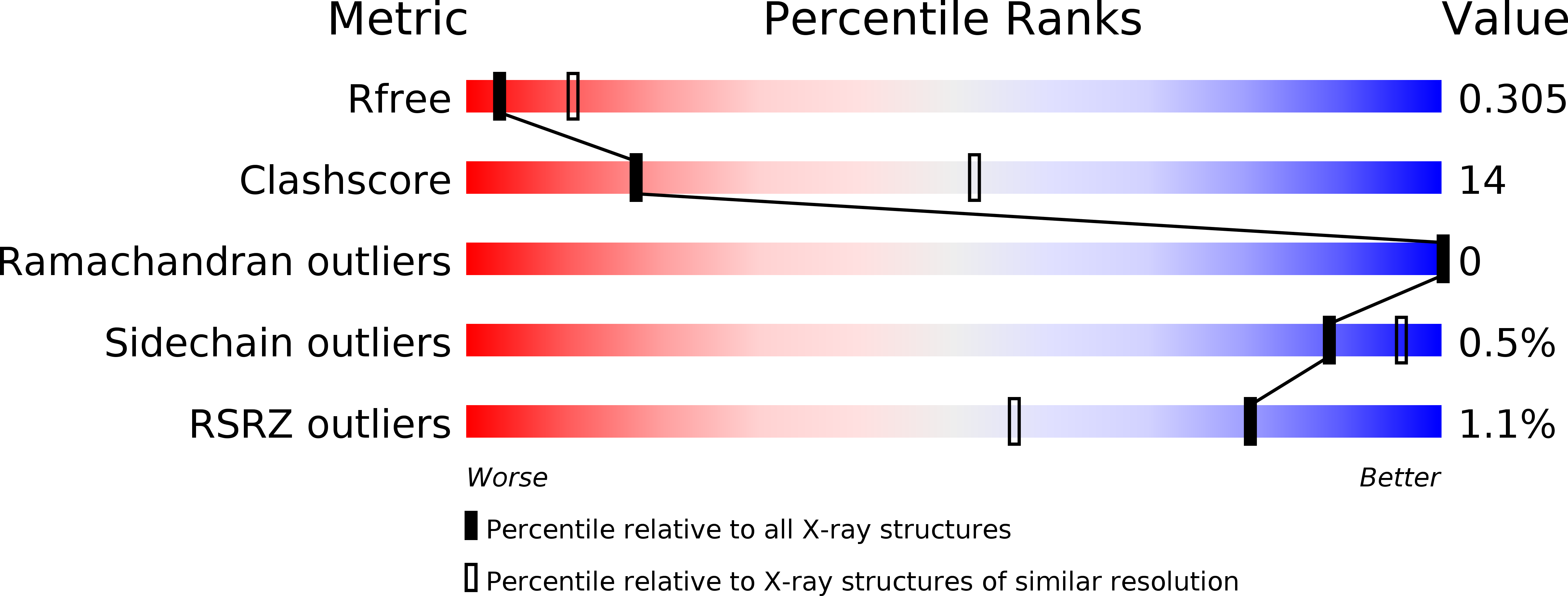
Deposition Date
2017-02-22
Release Date
2017-03-08
Last Version Date
2024-11-20
Entry Detail
PDB ID:
5X6N
Keywords:
Title:
Structure of P. Knowlesi DBL Domain Capable of binding Human Duffy Antigen
Biological Source:
Source Organism:
Plasmodium knowlesi (Taxon ID: 5850)
Host Organism:
Method Details:
Experimental Method:
Resolution:
3.00 Å
R-Value Free:
0.29
R-Value Work:
0.24
R-Value Observed:
0.24
Space Group:
P 43 21 2


